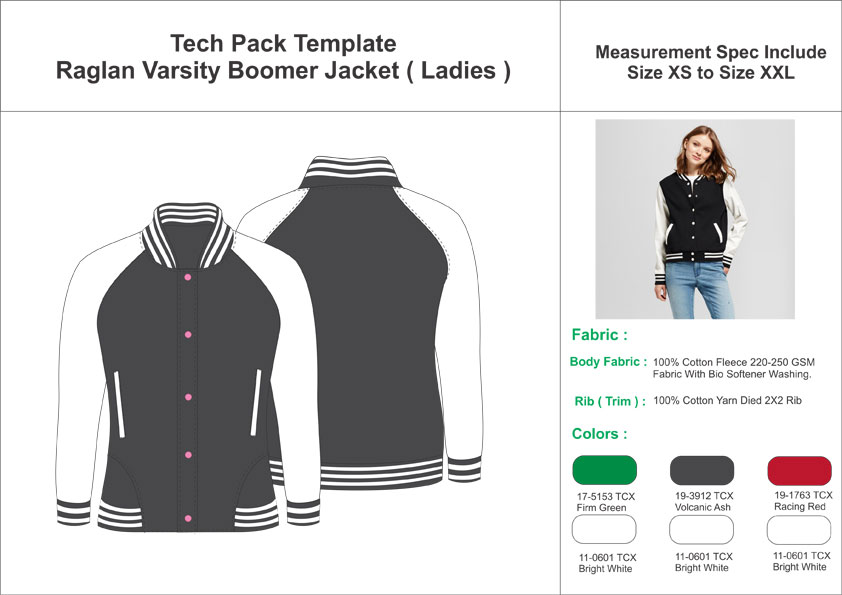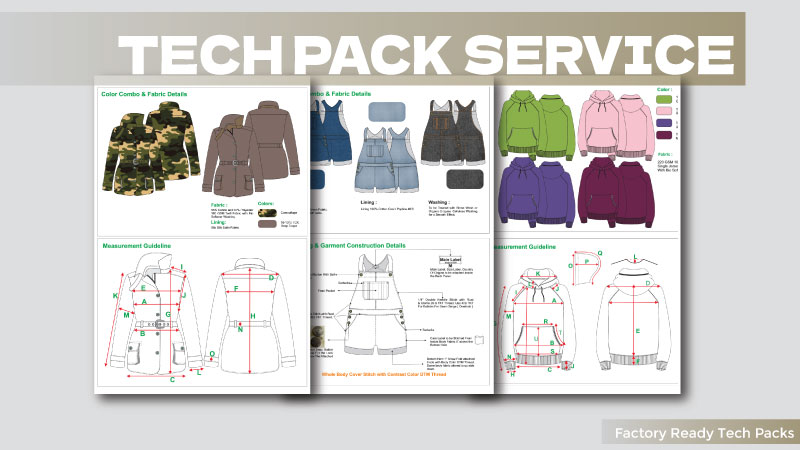Fashion design templates are the tools of the time where you can kick-start your collection instantly. In the fast-paced world of fashion, staying ahead requires agility. So, it demands a keen sense of style and efficient processes. To bring designs to life seamlessly, you need to have some structure so that you don’t have to start from zero every time. You can start with sample development and mass production while others still work on their style. One indispensable tool that has become a game-changer for clothing designers and brands is the tech pack template for clothing. In this article, we’ll delve into the significance of these templates and explore how they can revolutionize the way you approach garment design and production.
You may overlook some crucial details while explaining garment details to the manufacturer, leading to delays in manufacturing or loss of time and money. When we have a guideline with all the bases prepared, the margin of error becomes zero. We only need to focus on the creative aspect of the style and our core vision. You can reduce and increase production efficiency multifold. Our tech pack templates are especially suitable for streetwear fashion designers who focus on creativity. They need their art presented in a way that makes clothing design and garment manufacturing easier.
Understanding the Fashion Tech Pack
A fashion tech pack is essentially a blueprint for your clothing design. It serves as a document that communicates crucial information needed for garment production. Therefore, a tech pack should have detailed instructions about a style, such as fabric, measurements, stitching, trims, etc. The idea is to ensure everyone involved in the production process is on the same page. The tech pack ensures clarity and reduces confusion in the production process.
Benefits of Using Fashion Tech Pack Templates
Fashion tech pack templates help you start your process with a strong base. You are not starting your design and tech pack development from scratch here. Apart from this, if done correctly, fashion tech pack templates have a few notable advantages. Some of the benefits of using fashion tech pack templates are below.
Clarity and Precision :
Tech pack templates provide a standardized format for presenting design details. This clarity ensures no room for misinterpretation, reducing production errors and saving valuable time and money.
Collaboration and Communication:
Designers, pattern makers, and manufacturers can collaborate seamlessly using a tech pack template. The templates improve communication throughout the supply chain and foster a more efficient and cohesive workflow.
Time and Cost Efficiency:
Importantly, you are not starting the process from zero when using a tech pack template. A tech pack template streamlines the design and production process, helping you achieve time and cost efficiency. With the help of these fashion design templates, as they provide, you can reduce the costly mistakes that may occur, creating a base structure upon which you can build your creative outfit.

Tech Pack Template Ladies Raglan Varsity Jacket
Components of an Effective Fashion Tech Pack Template
Design Overview:
The best practice for fashion tech pack design includes all essential components, which the designer must illustrate and describe systematically. Ideally, the template comprises all crucial fashion tech pack elements for designers. The fashion design template helps the end user build the style by providing base elements.
Technical Drawings:
Fashion technical flats or designer sketches are crucial components. Fashion flats, also known as technical drawings, give an overall idea about the style. The tech pack designer takes the fashion illustrations provided by creative designers and converts them into fashion flat sketches with front, back, and side views of the garment. The fashion flat sketch includes detailed technical drawings highlighting the critical aspects of the garment. The flat sketch should also include the fabric type and silhouettes the designer wants to use in the design details.
Color Options :
When preparing a style, the designer must provide color options. Components of a comprehensive fashion design template include color options with appropriate Pantone color swatches. Pantone numbers are essential, especially in the garment industry color selection. A complete Pantone color guide that gives the exact color code is available. The industry refers to Pantone books when developing fabric or trims. So, a tech pack template includes the Pantone color swatches.
Stitching and Garment Construction Details:
The stitching and garment construction details are essential. The technical pack’s construction details break down the garment into its components and provide instructions. Each part has its unique stitching technique and seam allowance. So, it is important to mention their construction details individually.
Material Specifications Trims and Accessories:
A detailed tech pack template specifies the fabrics, trims, and accessories required for each part of the garment. Tech pack designers must include information on color, texture, and any unique treatments.
Measurement Guideline and Size Charts:
The most important part, without which the tech pack is incomplete, is the garment measurement specification. The measurement spec sheet has two parts. One is the measurement chart, which we call a size chart. It has the measurements of the critical components of the garment. The second part is the measurement guideline. It shows how to take the measurements. Measurement guidelines help with garment pattern making and grading. Clearly outline the measurements for each size to ensure consistency in sizing across the entire collection.
Fashion Design Templates have become indispensable tools for clothing designers and brands aiming to navigate the complex landscape of the fashion industry. By embracing these templates, you enhance the precision and efficiency of your design process and foster better collaboration across the supply chain. In a world where innovation and speed are critical, incorporating fashion tech packs into your workflow is a strategic move toward staying at the forefront of the ever-evolving fashion landscape.
